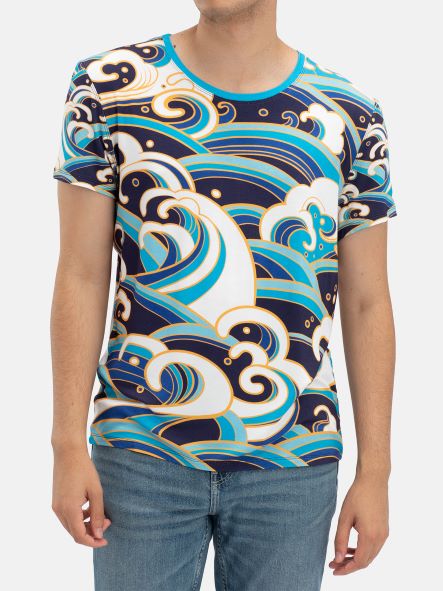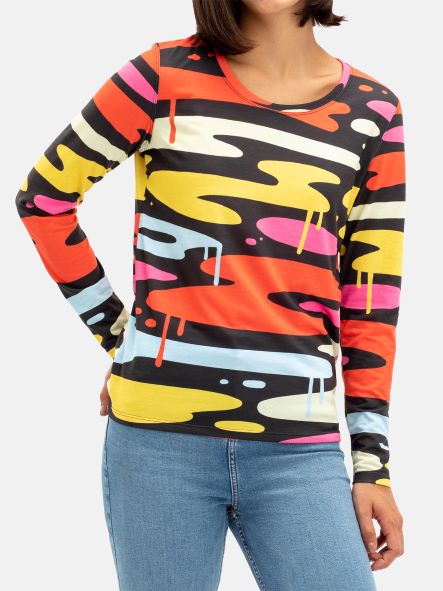How are Cotton T-shirts Made?
Pretty much everyone will own at least one cotton t-shirt due to the garment’s flexibility and comfort. However, nobody really considers where the t-shirt came from and how it found itself in your clothing lineup. With that in mind, this article will take you through the journey of how cotton t-shirts are made in the modern era – allowing you to get a solid understanding of how the humble cotton t-shirt came to be.

Sourcing the Cotton
So, how are cotton t-shirts made? The very first step in the process is to source the material needed to create the t-shirt – cotton. Cotton fields are located across the world, although there are a considerable number of them throughout the Southern and Western states of the US. Cotton balls are collected from these fields using a large cotton harvesting machine. This machine twists the cotton from its stem mechanically, completely removing the need for manual labour.
Once the field has been harvested, the cotton is transferred to a ‘cotton gin’, which is like a big engine that separates the cotton fibres from the seeds. After this, the cotton is packaged and transported to a warehouse where it is stored. The cotton will remain here until it is purchased by a textile mill, where it will be processed further.
One of the most common questions asked about this stage of the process is, “How many cotton plants does it take to make one t-shirt?”. The exact amount of cotton required to make a t-shirt will vary depending on a wide variety of factors, although the average amount for a standard t-shirt is around 8oz (226g). Ultimately, it will take approximately four cotton plants to produce this amount of cotton, although the yield from each plant will vary, so this is not an exact science.

Looming & Processing
Once the cotton has arrived at the textile mill, the bales go through a process where the cotton fibres are twisted by up to 2500 revolutions per second. This process produces a strand of interlocked fibres called yarns that can then be used in areas involving textiles, knitting, or weaving.
These yarns are then knitted together using a ‘looming machine’. This works in essentially the same way that classic handweavers did – although in a much faster manner! The looming process results in a knitted fabric called ‘gray goods’, which are then treated with chemicals and heat. Once this is complete, the material is then ready for printing.
How are Cotton T-Shirts Made? Printing
As cotton is a natural fibre, it requires the use of either pigment printing or reactive printing. With pigment printing, a large printer moves back and forth across the fabric depositing pigments. It works in layers to build up the desired colours, which lay on top of the fabric just like if you were to paint it.
Reactive printing is a process that uses dye, water, pressure, and heat to create exceptionally bold colours. After the fabric is washed and pre-treated, an inkjet printer deposits the dye deep into the cotton fibres. High-pressure steam binds everything together to ensure that it is long-lasting.

Cutting & Sewing
The process of printing the design onto the fabric before cutting has provided much more creative control for manufacturers. Why? Before, methods of printing onto garments after cutting were far trickier to complete on a large scale. During the cutting process, the garment’s shape is cut from the larger textile sheet using a special machine that offers a high level of precision.
The t-shirt outlines are then sewen and stitched (by hand) to create the final product. At Contrado, we process it all at our London HQ. Here, we’re able to ensure a high level of quality at each stage of the production process!

Packaging & Shipping
Once the product is complete, all that’s left is to send it over to the final destination. We package everything by hand, and we’ll aim to dispatch items within 1-2 days. So, if you’re in the market for a new t-shirt, you’ll know that you won’t have to wait long!
Furthermore, we use Royal Mail’s 1st Class Recorded service for most of our orders, which means that 94% of orders are delivered the following day. If you’re ordering internationally, our speedy delivery partners tend to have your item with you within three to five days.
How are Cotton T-Shirts Made – Conclusion
Hopefully we’ve answered the question of how are cotton t-shirts made. The art of t-shirt manufacturing has been significantly refined over the past century, which has meant that production times are faster than ever, whilst quality remains consistently high. So, the next time you pull on your favourite cotton t-shirt, you’ll be aware of the garment’s journey from the cotton fields to your wardrobe!
Interested in snagging a new tee? Why not check out our collection here at Contrado? Our t-shirt range features designs from a selection of talented independent artists, meaning your style is bound to turn heads. So, simply click HERE if you’d like to take a peek and see what catches the eye!


